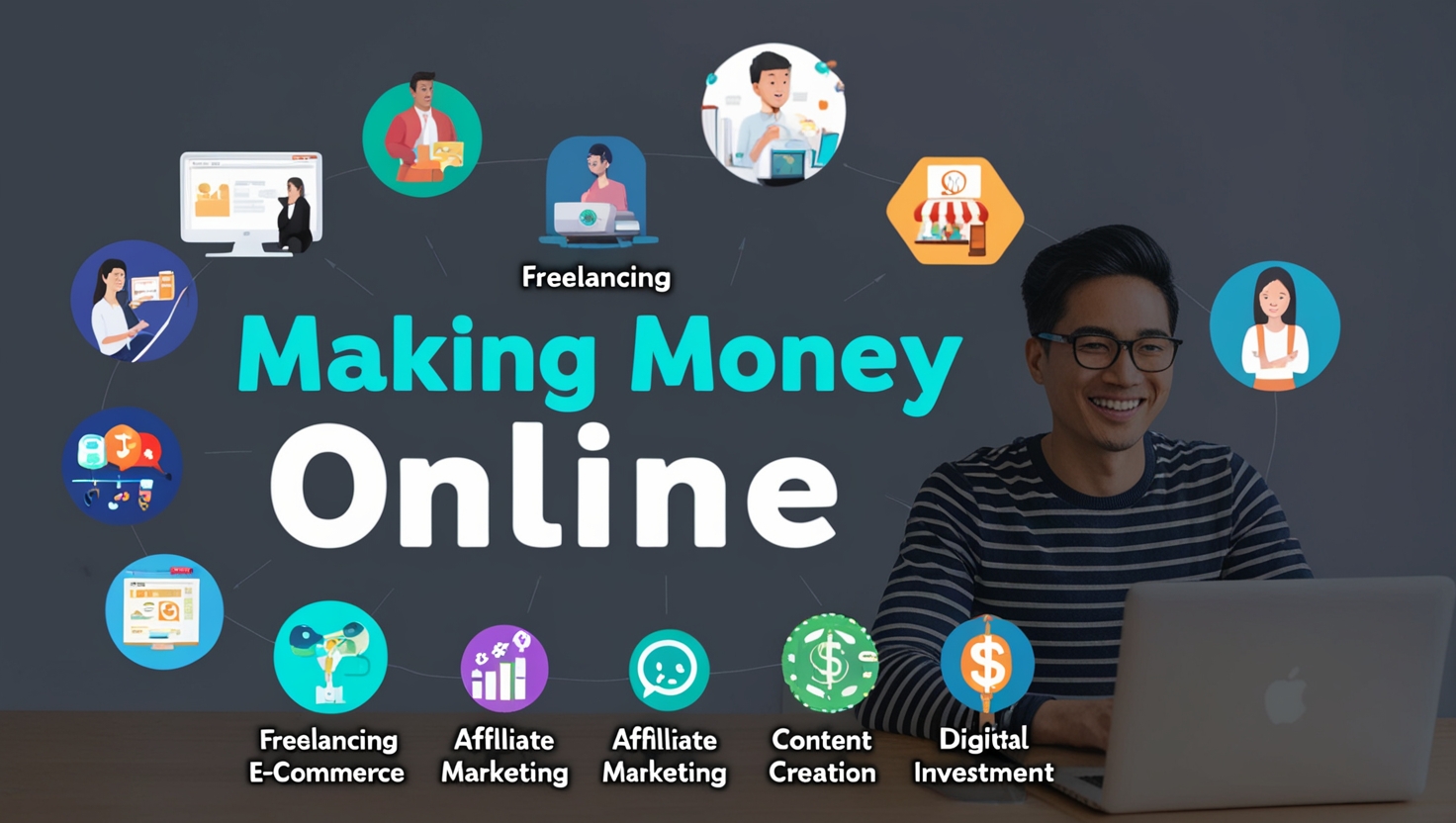Introduction: The Power of Digital Communities in the Business World
In today's digital age, digital communities have become more than just groups of individuals with shared interests. They are powerful engines for interaction, innovation, and economic growth. Whether you're an aspiring entrepreneur, a seasoned marketer, or just someone passionate about an idea, understanding how to create and manage a successful digital community can open doors to countless profitable opportunities.
This article is a comprehensive guide that takes you on a step-by-step journey, from identifying your profitable idea to achieving sustainable income from your digital community. We will explore effective marketing strategies, essential management tools, and how to build strong relationships with your community members. Let's get started!
Chapter 1: Identifying Your Profitable Idea for a Digital Community
The first step towards building a successful digital community is identifying a clear and profitable idea. This requires a thorough market analysis, an understanding of the target audience's needs, and an assessment of your competitive advantage.
1.1 Market Analysis and Target Audience
Before you start building your community, ask yourself: Who is my target audience? What are their needs and desires? What problems do they face?
- Find gaps in the market: Are there areas that are not adequately served by existing digital communities?
- Use keyword analysis tools: Discover the keywords your target audience is searching for.
- Surveys and interviews: Talk directly to people who might be interested in your community.
1.2 Assessing Competitive Advantage
What sets your community apart from others? Do you have unique expertise? Do you offer exclusive content? Do you have an innovative business model?
Example: If you are an expert in the field of cryptocurrencies, you can create a digital community that provides in-depth analysis, investment recommendations, and exclusive training courses.
Chapter 2: Choosing the Right Platform for Your Digital Community
The success of your digital community depends heavily on choosing the right platform. There are many options available, each with its advantages and disadvantages.
2.1 Social Media Platforms (Facebook, Twitter, LinkedIn)
Social media platforms are a popular choice for digital communities due to their large user base and ease of use. However, it can be difficult to stand out from the noise.
- Facebook: Ideal for groups with general interests.
- Twitter: Suitable for quick conversations and breaking news.
- LinkedIn: Best for professional and business communities.
2.2 Private Forums (Discourse, phpBB)
Private forums offer more control and customization compared to social media platforms. They are ideal for specialized communities that require careful content organization.
2.3 Membership Platforms (Patreon, Memberful)
If you plan to offer exclusive content or paid services, membership platforms are an excellent choice. They allow you to collect subscription fees from your community members.
2.4 Live Streaming Platforms (Twitch, YouTube Live)
If you enjoy creating live video content, live streaming platforms can be a great way to build a community around your passion.
Chapter 3: Building Your Digital Community's Identity
Your digital community's identity is what sets it apart from others. This identity should reflect your values, mission, and the personality of your target audience.
3.1 Defining Core Values and Mission
What are the values you believe in? What message do you want to convey? These values and message should be clear in every aspect of your community.
3.2 Designing a Distinctive Logo and Visual Identity
The logo and visual identity are the first things people see when they learn about your community. Make sure they reflect your community's personality professionally.
3.3 Creating a Brand Guide
The brand guide should include guidelines on the use of the logo, colors, fonts, and images. This ensures consistency across all marketing materials.
Chapter 4: Strategies for Attracting Members to Your Digital Community
Attracting members is key to growing your digital community. There are many strategies you can use, including content marketing, social media marketing, and email marketing.
4.1 Content Marketing
Creating valuable and engaging content is a great way to attract potential members to your community. This can include articles, blogs, videos, and podcasts.
Example: If your community focuses on real estate investing, you can create a blog that provides tips on buying properties, managing properties, and analyzing the market.
4.2 Social Media Marketing
Use social media to promote your community, interact with potential members, and build brand awareness.
4.3 Email Marketing
Build an email list of people interested in your community, and send them regular newsletters with updates, exclusive content, and special offers.
4.4 Collaboration with Influencers
Collaborating with influencers in your field can help you reach a wider audience and attract more members to your community.
Chapter 5: Managing and Growing Your Digital Community
Once you start attracting members, it's important to manage and grow your community effectively. This requires setting clear rules, encouraging interaction, and resolving conflicts.
5.1 Setting Clear Community Rules
The community rules should be clear and easy to understand. These rules should define acceptable and unacceptable behavior, and the consequences of violating the rules.
5.2 Encouraging Interaction and Participation
Encourage members to interact with each other, ask questions, and share ideas. You can do this by organizing contests, polls, and Q&A sessions.
5.3 Resolving Conflicts Effectively
Conflicts are bound to arise in any community. It's important to resolve these conflicts effectively and fairly to maintain a positive environment.
5.4 Rewarding Active Members
Reward active members who contribute significantly to the community. This can include giving them badges, promoting their content, or inviting them to participate in special events.
Chapter 6: Monetizing Your Digital Community
There are many ways to monetize your digital community. Some popular options include advertising, subscriptions, digital products, and consulting services.
6.1 Advertising
You can display ads on your community's website, in your newsletters, or in your videos.
6.2 Subscriptions
You can offer paid subscriptions that give members access to exclusive content, additional services, or other perks.
6.3 Digital Products
You can sell digital products such as e-books, online courses, templates, and software.
6.4 Consulting Services
If you are an expert in your field, you can offer consulting services to your community members.
6.5 Affiliate Marketing
You can promote other products or services and earn a commission on every sale made through your referral link.
Chapter 7: Measuring and Analyzing Your Digital Community's Performance
It's important to measure and analyze your digital community's performance regularly to identify what's working and what's not. This information can help you make informed decisions to improve your community and increase your profits.
7.1 Tracking Key Metrics
Track key metrics such as the number of members, engagement rate, retention rate, and conversion rate.
7.2 Using Analytics Tools
Use analytics tools such as Google Analytics and Facebook Insights to understand your community members' behavior.
7.3 Conducting Surveys
Conduct surveys regularly to collect feedback from your community members about what they like and dislike.
Chapter 8: Essential Tools and Technologies for Managing Digital Communities
There are many tools and technologies that can help you manage your digital community efficiently and effectively. Some popular options include social media management tools, project management tools, and communication tools.
8.1 Social Media Management Tools (Hootsuite, Buffer)
These tools allow you to schedule posts, track mentions, and interact with members on social media.
8.2 Project Management Tools (Trello, Asana)
These tools help you organize tasks, track progress, and collaborate with your team.
8.3 Communication Tools (Slack, Discord)
These tools allow you to communicate with your community members in real-time.
8.4 Content Management Systems (WordPress, Drupal)
These systems help you create and manage your community's website.
Chapter 9: Successful Case Studies of Profitable Digital Communities
There are many successful examples of profitable digital communities. Let's take a look at some of these cases and draw lessons learned.
9.1 Shopify Community
Shopify is an e-commerce platform that has a strong digital community of entrepreneurs and small business owners. The community provides support, advice, and networking opportunities.
9.2 HubSpot Community
HubSpot is a marketing software company that has an active digital community of marketers. The community provides training, resources, and networking opportunities.
9.3 Stack Overflow Community
Stack Overflow is a question-and-answer website for programmers. It is a huge community of programmers who help each other solve problems.
Chapter 10: The Future of Digital Communities and Available Opportunities
Digital communities are constantly evolving. There are many opportunities available for those who want to create and manage profitable digital communities. Some key trends to watch out for include:
- Artificial Intelligence: AI can be used to improve member experience, automate tasks, and personalize content.
- Virtual Reality and Augmented Reality: These technologies can be used to create immersive community experiences.
- Decentralization: Blockchain technology can be used to create more transparent and secure decentralized digital communities.
Conclusion: Building and managing a profitable digital community requires careful planning, consistent effort, and a commitment to providing value to your members. By following the tips and strategies outlined in this article, you can increase your chances of success and achieve your financial goals.




